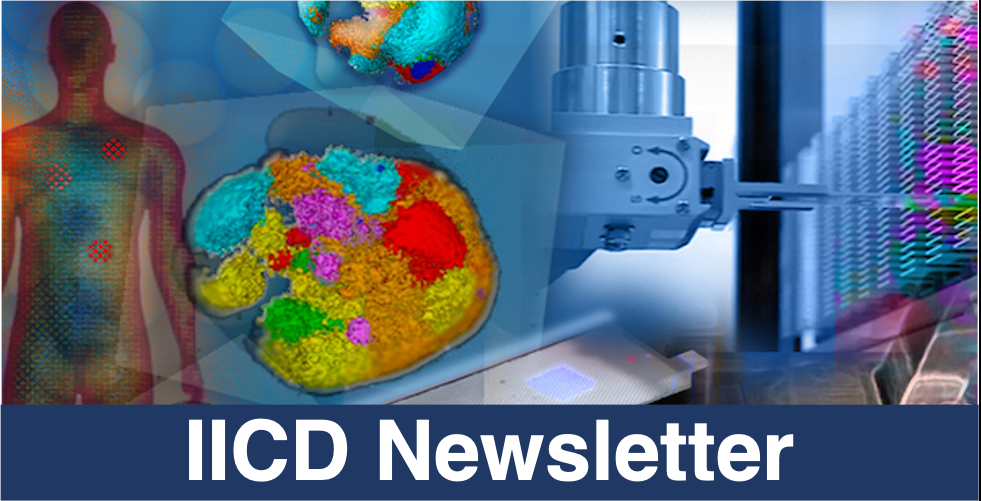|
Some mathematical models of evolution:
what did we learn?
|
|
|
How does spatial structure of a population influence the dynamics of their genetic evolution? This question rang clear through the three-week mini-series delivered this past month by Alison Etheridge. Through analysis of a variety of agent-based models, as well as their limiting population-based stochastic differential equation models, Etheridge painted a vivid picture of how population density, expansion, and migration all play vital roles in genetic drift and diversity.
Etheridge started her first lecture by reviewing some of the fundamental non-spatial models of evolution, namely the Wright-Fisher model and its diffusion limit. She quickly turned, though, to consider the effect of spatial structure through the following type of model: In each generation individuals give birth to a random, mean 1, number of offspring whose locations are randomly distributed in some region around the parent’s location. This dynamic leads to interesting effects such as spatial population clumping. Further refining this type of model lead Etheridge (with her collaborators N. Barton and A. Veber) to introduce a class of spatial Lambda-Fleming-Viot processes and associated coalescents in which selection occurs in an evolving population according to spatially influenced rules. The natural question in the context of this model is to understand on what spatial scales can we expect to observe a signature of natural selection. Etheridge provided an answer to this question in certain scaling limits.
Whereas the models in the first lecture dealt with stable population sizes, Etheridge’s second lecture opened the horizon to the potential impact of range expansion and population growth. Such an expanding population can be modeled in some cases through spatial branching random walks in which the mean number of offspring exceeds one in regions where the population density is small. The population density roughly follows the well-studied Fisher-KPP equation which has traveling wave solutions. On top of this expansion, Etheridge imposed a model for selection between different allelic types. Prevalence of mutations over time in the population are affected by two main types of events: (1) population waves and (2) genetic waves. Population waves lead to founder effects whereby deleterious mutations become common in a region based on the fact that they were present in the first individuals to arrive there. Over time, individuals at the front of the expansion become less and less fit, and those from the bulk out-compete them, forming an inner genetic wave. The balance of these two effects was explored in this lecture through numerical simulations. Figure 1 starkly illustrates how even without additional mutation and selection range expansion can lead to segregation of different types of genetic populations in Pseudomonas aeruginosa.
|
|
Figure 1: Range expansion of different mutations in Pseudomonas aeruginosa. Courtesy of Kevin Foster of Oxford Zoology, of an expanding population of Pseudomonas aeruginosa. https://zoo-kfoster.zoo.ox.ac.uk/
Figure 2: The variability of beaks in Darwin’s finches.
|
|
|
The final lecture in Etheridge’s series probed Fisher’s infinitesimal model which attempts to quantify how many very small genetic effects collectively influence the phenotype of individuals. Based on this model and the central limit theorem, one expects that traits of children will be normally distributed around the average of their parents’ traits. When subject to environmental changes, the variance in these normal distributions become vital in that it allows a population to rapidly adapt, thus illustrating Fisher’s assertion: “Natural selection is a mechanism for generating an exceedingly high degree of improbability”. Figure 2 provides an oft copied figure from Darwin’s study of finches in which the variability of their beaks is remarkably large.
As a whole, the three lectures contained a rich variety of biologically inspired and relevant probabilistic models, as well as lessons to be learned from their analysis. The IICD and Probability and Society Initiative are grateful to Alison Etheridge, as well as to Amaury Lambert for delivering inspiring lectures this fall, and to the hundreds of people who tuned in and participated in these series. Stay tuned for more activity in the future!
|
|
|
Meet Our Associate Members
In this monthly newsletter, we will regularly feature
the many talented members of our Institute.
|
|

|
|
Saeed Tavazoie is Professor of Biological Sciences and of Systems Biology at Columbia University. His research focuses on understanding the principles that govern the organization and behavior of biological networks, aiming to understand how cells achieve adaptive gene expression states, both during short-term physiological adaptation and long-term adaptive evolution. These fundamental problems are major driving forces in disease pathogenesis, ranging from microbial antibiotic resistance to cancer progression. His lab studies this inherently systems-level phenomenon across a range of timescales, from rapid transcriptional responses, to multi-generational epigenetic reprogramming, to long-term rewiring of signaling and regulatory networks over evolutionary timescales. The lab makes use of diverse experimental systems from bacteria to mammalian cell-lines in order to study general principles that operate across organismal taxa and complexity. Saeed is an associate member of the Herbert and Florence Irving Institute for Cancer Dynamics, to which he brings his deep knowledge of experimental and theoretical systems biology.
|

|
|
Carol Prives, an associate member of the Herbert and Florence Irving Institute for Cancer Dynamics, is the Da Costa Professor of Biology in the Department of Biological Sciences at Columbia University. Carol has transformed the field of basic cancer research by characterizing the structure and function of the p53 tumor suppressor and its binding partners, notably Mdm2. She discovered that wild-type p53 is a sequence-specific DNA binding transcriptional activator, a finding that stimulated numerous studies devoted to identifying genes that regulate p53-mediated cellular outcomes. Her work has continued to the present to delve into the mechanisms by which wild-type p53 recognizes its cognate sites in DNA.
|
|
Fate mapping quantifies the dynamics of B cell development and activation throughout life
Melissa Verheijen*, Sanket Rane*, Claire Pearson, Andrew J. Yates**, Ben Seddon**
Cell Reports, Nov 17, 2020
* joint first
** joint senior/corresponding
|
|
|
|
|
|


